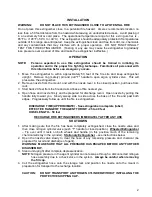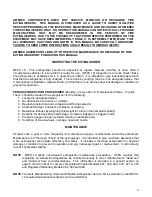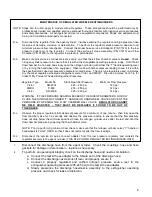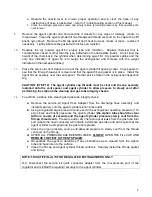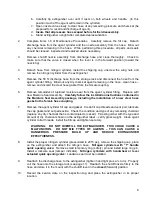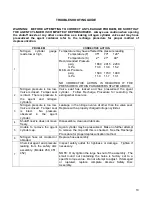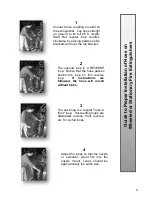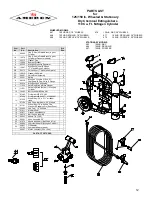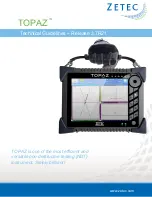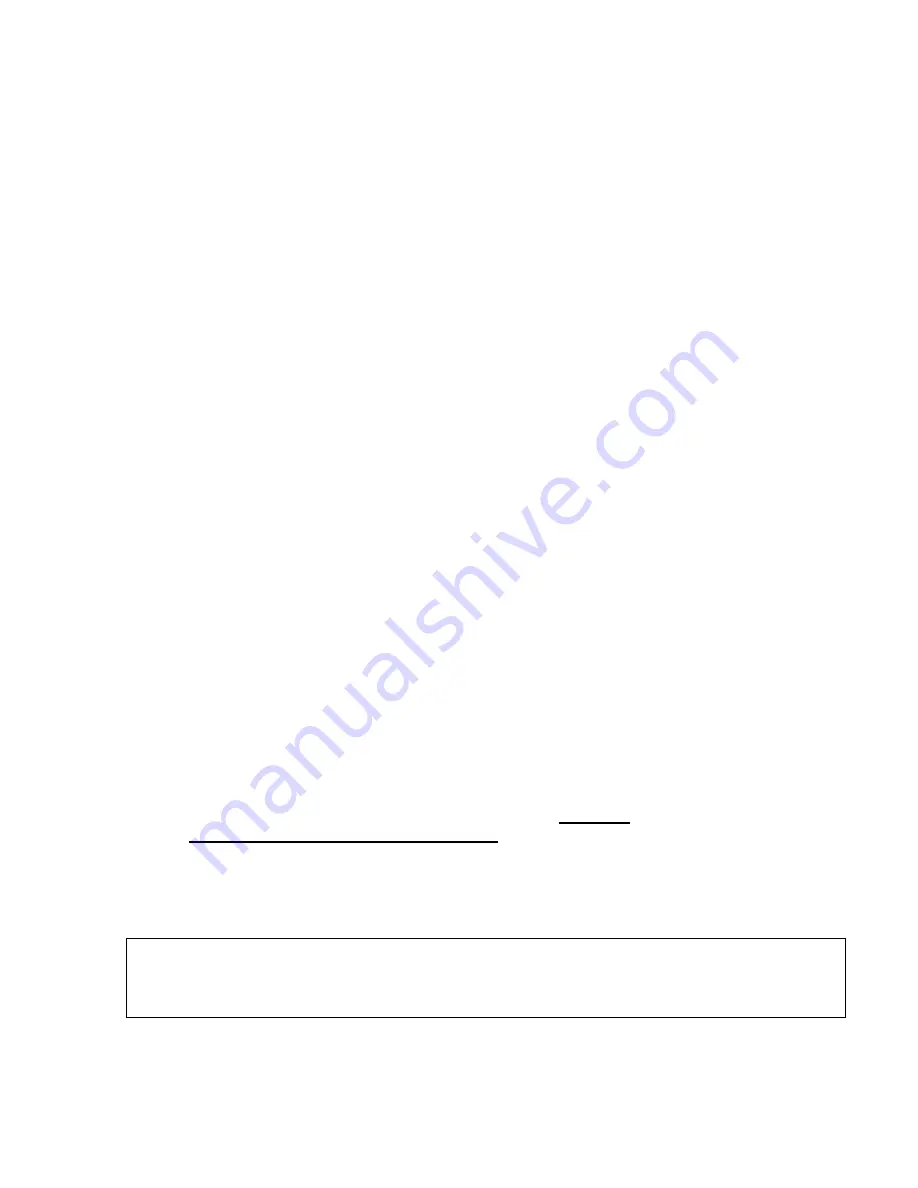
7
e. Operate the nozzle lever to ensure proper operation and to clear the hose of any
obstructions (if hose is obstructed – refer to Troubleshooting section of this manual.
f.
Close the nitrogen pressure source and slowly relieve remaining pressure by fully operating the
nozzle lever.
9.
Remove the agent cylinder cap and examine it closely for any signs of damage, cracks or
thread wear. Clean the agent cylinder fill cap threads and thread vent port on the cap with a stiff
bristle nylon brush. Remove the fill cap gasket and check for wear, cracks or tears – replace if
necessary. Lightly lubricate the gasket with Visilox and reinstall.
10.
Examine the dry powder agent for proper type and condition. Replace chemical that is
contaminated, caked or other than the type indicated on the nameplate (label). Do not trust the
height of the chemical in the cylinder when determining agent fill. Dry powder settles and the
only true indication of agent fill is to weigh the extinguisher and compare with the weight
indicated on the nameplate (label).
11.
Place the service kit Vent Spacer on top of the agent cylinder fill opening collar. Check again to
see that the fill cap thread vent is clean and that the agent fill cap gasket is in place. Install the
agent fill cap securely over the vent spacer. Record service data on the extinguisher inspection
tag.
CAUTION: (STEP 12) The agent cylinder cap threads must be clear and the cap securely
installed onto the vent spacer and agent cylinder to allow pressure to slowly vent after
performing the siphon tube clearing and gas tube integrity checks.
12.
To perform a siphon tube clearing and gas tube integrity check:
a.
Remove the service kit Agent Hose Adapter from the discharge hose assembly and
install it securely onto the agent cylinder siphon tube outlet.
b.
Using a regulated argon pressure source set to the extinguisher operating pressure (110
psi), slowly and briefly pressurize the agent cylinder (
the siphon tube should be clear
within a couple of seconds and the agent cylinder pressure slowly vent from the
fill cap thread vent)
. Pressure and/or dry chemical agent leaks from the gas tube inlet
port (where the hose connects) will indicate a defective gas tube and will require that the
agent cylinder be emptied and the gas tube replaced.
c.
Close the argon pressure source and allow all pressure to slowly vent from the thread
vent port on the fill cap.
d.
AFTER ALL PRESSURE HAS BEEN RELIEVED,
SLOWLY
OPEN THE FILL CAP AND
REMOVE THE TEST KIT VENT SPACER.
e.
Re-examine the agent to determine if any obstructions were cleared from the siphon
tube and have risen to the surface.
f.
Clean the fill cap and agent cylinder thread surfaces. Securely install the fill cap gasket
and fill cap.
NOTE: THIS STEP (R-d.) IS FOR REGULATED EXTINGUISHERS ONLY
R-d. Disconnect the service kit quick connector adapter from the low pressure port of the
regulator and reinstall the regulator securely to the agent cylinder.



